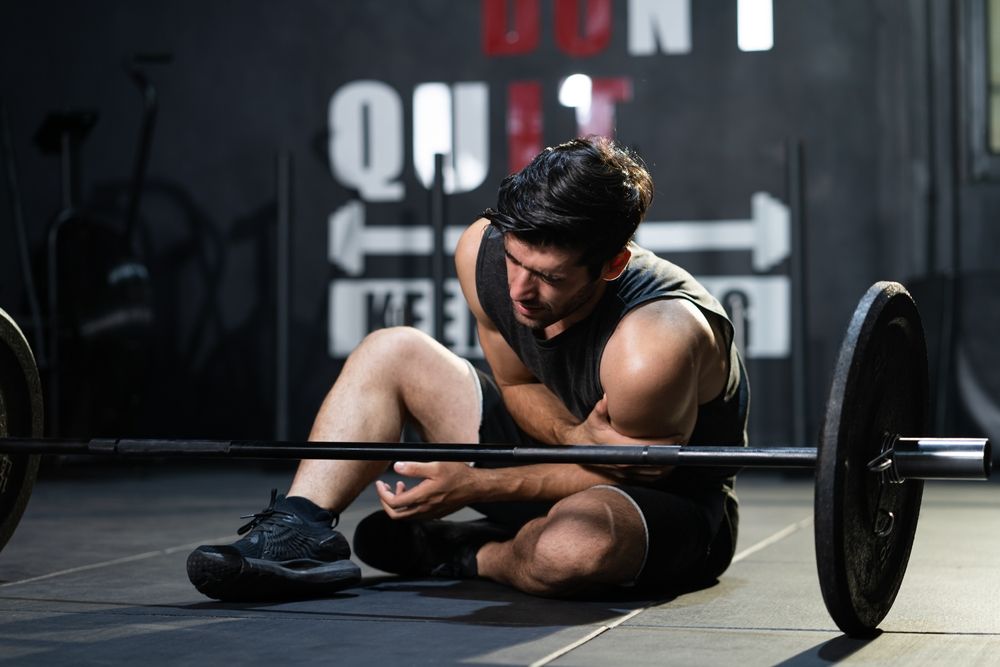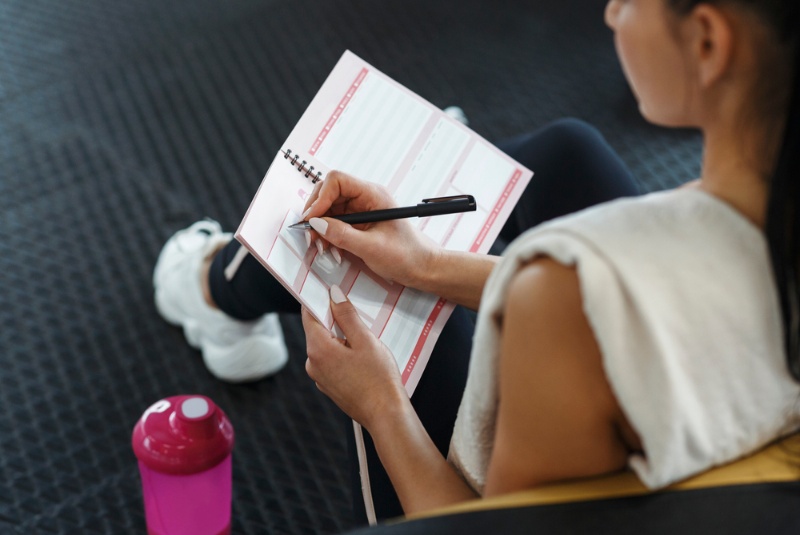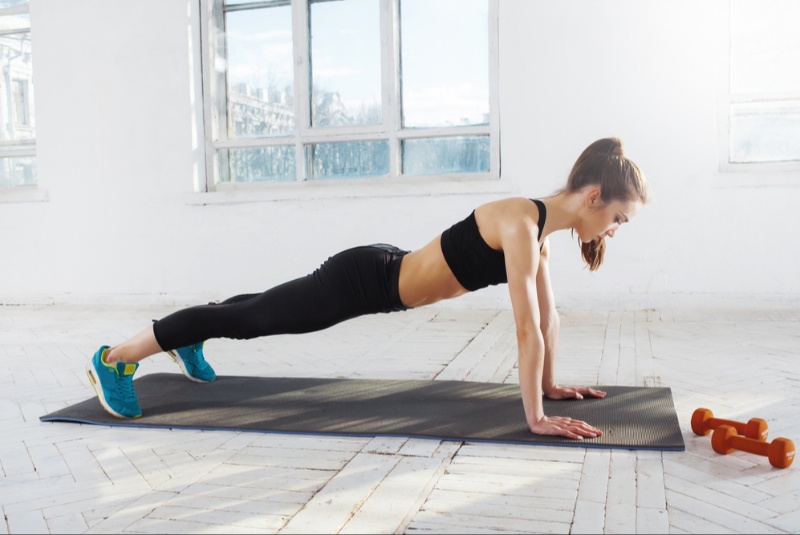Weightlifting is an effective way to build strength, increase muscle mass, and improve overall fitness. However, many people make mistakes when lifting weights that can lead to poor results or, worse, injury. Recognizing these common mistakes and learning how to fix them can help you improve your technique, avoid injuries, and maximize your progress. Here are ten common weightlifting mistakes and tips on how to correct them.
1. Using Too Much Weight
One of the most common mistakes in weightlifting is using weights that are too heavy for your current strength level. Lifting too much weight can compromise your form and increase the risk of injury, especially when performing complex exercises like squats or deadlifts.
-
How to Fix It: Start with a weight that you can lift comfortably for 8-12 reps with good form. Gradually increase the weight as you become stronger. It’s better to lift lighter weights with proper technique than to struggle with heavier weights that you can’t control.
-
Impact: Lifting the right weight will ensure that you’re challenging your muscles without risking injury, which is essential for long-term progress.
2. Not Warming Up Properly
Skipping warm-ups or rushing through them can result in muscle strains and decreased performance. A proper warm-up prepares your muscles, joints, and cardiovascular system for the workout ahead, helping you lift heavier weights more effectively and reducing the risk of injury.
-
How to Fix It: Spend 5-10 minutes doing dynamic stretches, light cardio, and movement-specific warm-up sets with lighter weights. This increases blood flow to your muscles and improves mobility.
-
Impact: A good warm-up increases muscle flexibility and joint mobility, ensuring a safer and more effective weightlifting session.
3. Poor Form and Technique
Lifting with poor form is one of the fastest ways to get injured. Whether it’s rounding your back during deadlifts, letting your knees cave in during squats, or jerking the barbell during presses, improper technique can place unnecessary strain on your joints and muscles.
-
How to Fix It: Focus on maintaining a neutral spine, engaging your core, and using controlled movements. Consider working with a trainer or recording yourself to assess your form. If possible, start with lighter weights to master the movement before progressing to heavier loads.
-
Impact: Proper form reduces the risk of injury and ensures that you are effectively targeting the right muscles for optimal gains.
4. Not Using Full Range of Motion
Many lifters shorten the range of motion to lift more weight or because they’re in a hurry, but not using the full range of motion reduces the effectiveness of the exercise and can lead to imbalances in muscle development.
-
How to Fix It: Focus on performing each exercise with a full range of motion. For squats, go low enough so your thighs are parallel to the ground. For bench presses, lower the bar to your chest and press it all the way up.
-
Impact: Using a full range of motion helps target the muscles more effectively, leading to better strength and muscle development while minimizing the risk of injury.
5. Overtraining and Not Allowing Adequate Recovery
Overtraining can happen when you push your body too hard without allowing adequate time for recovery. This can lead to muscle fatigue, diminished performance, and even injuries.
-
How to Fix It: Schedule rest days between heavy lifting sessions, and ensure you’re getting 7-9 hours of sleep each night. Listen to your body—if you feel excessively sore or fatigued, it’s important to rest or reduce the intensity of your workouts.
-
Impact: Proper recovery promotes muscle growth, reduces the risk of burnout, and ensures that you can maintain consistent progress in your training.

6. Neglecting to Strengthen Your Core
A weak core can affect your lifting performance and increase the likelihood of injury, especially in compound movements like squats, deadlifts, and overhead presses.
-
How to Fix It: Incorporate core-strengthening exercises such as planks, Russian twists, and leg raises into your workout routine. Strengthening your core provides stability for your spine and improves your overall lifting technique.
-
Impact: A strong core supports better posture, stability, and control during weightlifting, enabling you to lift more safely and efficiently.
7. Lifting Too Quickly or Jerking the Weight
Lifting weights too quickly or jerking the weight can reduce the effectiveness of the exercise and lead to injury. Fast, uncontrolled movements prevent muscles from engaging properly and can strain tendons and joints.
-
How to Fix It: Focus on slow, controlled movements. Aim for a 2-1-2 tempo (2 seconds to lower the weight, 1 second at the bottom, and 2 seconds to lift the weight). This helps engage the muscles more effectively and reduces the risk of injury.
-
Impact: Controlled lifting improves muscle engagement and ensures that you’re getting the most out of each rep while minimizing the risk of injury.
8. Not Focusing on Breathing
Breathing is crucial during weightlifting, as it helps stabilize your core and maintain proper posture. Holding your breath or breathing incorrectly can cause unnecessary tension and reduce your performance.
-
How to Fix It: Practice exhaling during the exertion phase of the lift (e.g., when pushing the weight up during a bench press or squatting back up) and inhaling during the lowering phase. Focus on steady, deep breaths throughout each set.
-
Impact: Proper breathing supports core stability, helps regulate intra-abdominal pressure, and improves overall strength during lifts.
9. Skipping Stretching and Mobility Work
Mobility and flexibility are just as important as strength when it comes to weightlifting. Failing to address tight muscles or limited range of motion can lead to poor lifting form and an increased risk of injury.
-
How to Fix It: Incorporate regular stretching and mobility work into your routine, both before and after your workouts. Focus on areas that are commonly tight, such as the hips, hamstrings, and shoulders.
-
Impact: Stretching and mobility exercises improve flexibility, reduce muscle tightness, and support proper form, helping you lift more efficiently and safely.
10. Not Having a Program or Goal
Many lifters either don’t follow a structured program or randomly pick exercises without a clear goal. This can lead to inefficient training, plateauing, and missing out on opportunities for growth.
-
How to Fix It: Create a structured weightlifting program that aligns with your specific goals, whether it’s building strength, increasing muscle mass, or improving endurance. Track your progress and make adjustments as needed to ensure continued improvement.
-
Impact: A well-structured program helps you stay focused, track your progress, and achieve your fitness goals more effectively, leading to faster results.
Weightlifting is a powerful way to enhance your physical health and strength, but making the right decisions and maintaining proper technique are key to avoiding injury and maximizing results. By correcting these common mistakes, you’ll improve your lifting performance, reduce the risk of injury, and reach your fitness goals faster. Remember, consistency and discipline in your training will always pay off in the long run.





